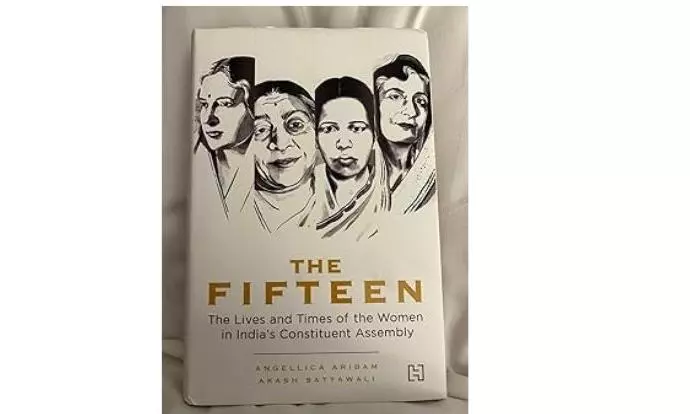Book Review | The 15 women who drafted the Indian Constitution

In 1946, 15 remarkable women became part of the Constituent Assembly of 299 to adequately represent the interests of their sex. This number became further reduced to 13 after the resignations of Malati Choudhury and Leela Roy.
Yet “to my mind reservation is a self-destructive weapon”, Begum Qudsia Aizaz Rasul famously said in her speech to the Assembly. “It keeps the spirit of separateness and communalism alive which should be done away with once and for all.” It is this speech that inspired at least one of the writers to take up this project.
These women were a microcosm of India and indeed had distinct ideologies. Leela Roy was a revolutionary at heart and in practice. Renuka Ray was often at the crossroads of armed and non-violent struggles. Sucheta Kripalani dabbled in subversive underground work but stayed clear of violent means. Sarojini Naidu, Hansa Mehta, Malati Choudhury, Rajkumari Amrit Kaur, Purnima Banerji and Vijaya Lakshmi Pandit followed Gandhian non-violence. Many of them served jail time.
All of them battled systemic misogyny. This meant that a majority of them had to come pre-armed with caste and class privileges. Begum Qudsia and Amrit Kaur belonged to royal families of Punjab. Vijay Lakshmi Pandit’s and Hansa Mehta’s families were political royalties. Sarojini Naidu, Malati Choudhury and Renuka Ray belonged to influential Bengali families. Ammu Swaminathan's daughter was Captain Lakshmi Sehgal and Aruna Asaf Ali was sister to Purnima Banerji. Annie Mascarene (a Latin Christian) and Dakshayani Velayudhan (a dalit) were the only exceptions.
This book provides details of their reform work, leadership politics, personal challenges and family. For example, did you know that Vijaya Lakshmi Pandit, born Swarup Kumari Nehru, was first married to journalist Syud Hossain but was forced by Motilal Nehru to divorce him? Or that Sarojini Naidu’s younger brother was Harindranath Chattopadhyay, Indian English poet who wrote the famous song, ‘My Heart is Beating’, in the film Julie, married Kamaladevi Chattopadhyay and was a Communist Party-supported member of the first Lok Sabha? �
The women’s contribution to politics, however, didn't end with the adoption of the Constitution. They took on prominent roles in the newly independent democratic India. Vijaya Lakshmi Pandit became the only Indian to be elected president of the United Nations General Assembly, an unparalleled achievement. Rajkumari Amrit Kaur, who is said to have played at Wimbledon and was one of the first female tennis players of India, became our first woman Union minister. Durgabai Deshmukh went on to become a founding member of the Planning Commission. Annie Mascarene and Renuka Ray served as ministers in their own state governments. Sarojini Naidu and Sucheta Kripalani proceeded to become the first female governor and chief minister, respectively.
“The future, not for women only, but for humanity as well, is what the women of today make it,” Vijaya Lakshmi Pandit had said in 1941 at her All India Women’s Conference presidential address. These words ring true now more than ever. At such a time, it is worth pausing to remember these 15 pioneering women, indeed learn about many of them, thanks to this extraordinary fact-filled treatise.
The Fifteen: The Lives and Times of the Women in India’s Constituent Assembly
By Angellica Aribam and Akash Satyawali
Hachette India
pp. 312; Rs 799
